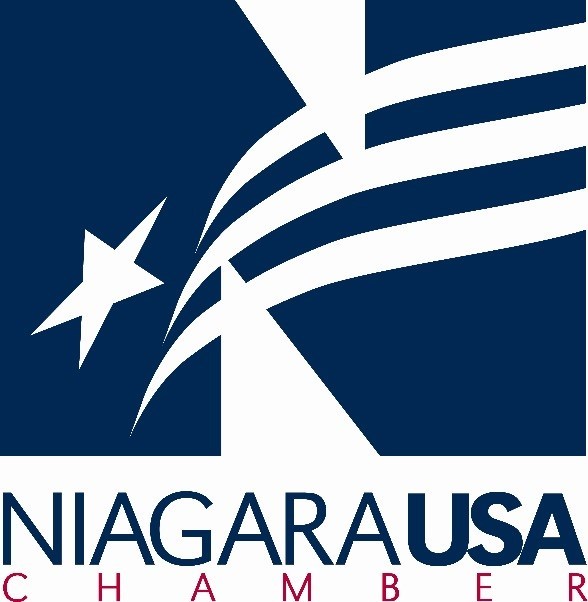Featured News - Current News - Archived News - News Categories
Property surveys underway in both communities; final assessments expected in July 2026
By Terry Duffy
Editor-in-Chief
The towns of Lewiston and Porter held a public information session July 24 at Porter Town Hall, where residents learned more about the joint reassessment project now underway in both towns.
Cindy Baire, partner of GAR Associates LLC in Williamsville, joined with Lewiston Assessor Linda Johnson and Porter Assessor Lena Villella to explain the various components of the multistep valuation process. Once complete, it will ultimately determine the commercial and private residential property values and new tax assessments.
According to Sect. 511 of New York State Real Property Tax Law, reassessment requires “all properties in each municipality to be assessed at market value or at a uniform level of assessment each year.”
The Town of Lewiston, including the Village of Lewiston and Sanborn, conducted its last townwide assessment in 2000, and the town maintained full 100% value until 2005. In the Town of Porter, which includes the Village of Youngstown and hamlet of Ransomville, full assessment was completed in 2000, and the town maintained full value through 2007.
Today, the Town of Lewiston stands at 43% of full assessment, while Porter is at 47%.
Baire went on to explain why both towns are conducting a full review at this time: “The two towns decided to do this jointly as it’s been a very long time since anything was done.”
In 2000, New York had an assistance program where communities were able to maintain their equalization numbers, she said. However, that program ended and, with it, went the focus on reassessments. “That program ended and a lot communities just stopped doing it. It’s a lot of work.”
The optimum for communities remains at 100% equalization, she noted.
Explaining this further, Baire said, “In New York state, there is a law, Sect. 305, that says you have to be uniform. So, what that means is (an assessor) cannot assess your property at 100(%) and a neighbor’s at 50(%), and if sold and we’re going to put that at the full market price.
“You can’t do that,” she said. “That’s what’s called ‘welcome stranger.’ It’s not allowed; it’s illegal. So, the problem in New York is, when you’re not all at the same level, 100%, and you share school districts and you have a county levy that has to be spread, you have to bring everybody (property owners) up to some kind of a standard. So, the state comes in and they measure the difference between sales and assessments. That’s called the equalization rate.”
For Lewiston, which has seen significant new developments since 2005, that means a house, on average, is assessed at 43% of its estimated value. In Porter, it’s 47%.
Baire said the full market value information is typically found on a property owner’s tax bill.
With regard to “equalization,” “What happens is that it’s an average. The state goes around (communities) and they do a sampling. They look at the sales and they sample properties. They come up with this number – the equalization rate. And they apply that to everybody – land, condos, houses, everything. And then they bring everybody up to full value so that they can create and spread the (costs) to towns, villages and schools,” Baire said. “It’s not very accurate; it’s the best they can do. … So, creating 100% and maintaining it allows (communities) to have better distribution of that tax burden. … But when you wait so long (to reassess), one property could be assessed at 45%; one property really assessed at 50%. It’s just a floating average, and that means that levy isn’t really being distributed properly. So, there are folks that are paying too much right now in their taxes because of this equalization rate, and there are folks that paying too little.
“So, the whole goal of this is to just make sure that those levies are being distributed fairly.”
Baire said that, once this process is achieved, equalization does, in fact, balance out for property owners.
She offered a scenario under New York’s Sect. 305 tax law (ad volarem), where changes in the rates of appreciation and depreciation impact how much property tax is actually paid.
In this case, two properties carry a preassessment value of $100,000, and each owner pays $2,000 in taxes under the older formula. Following a revaluation, one property increases to an assessment of $150,000 and the second increases to $300,000. The $150,000 property owner will pay $1,333 in taxes – a drop of $667. The $300,000 property owner, meanwhile, will have a new tax bill of $2,000 – increasing by that same $667.
“The pie is the same; (you) still have to collect $4,000. Somebody’s got to pay it,” Baire said.
For some, that means a little more; for others, it will be less.
Baire said that, once a municipality updates its individual property assessments and revises the taxes due – for the individual property owner with a grievance/overpayment – there is no grandfathering back to the older format.
“That’s why we do these projects; you can’t refund everybody (with a grievance). But we can straighten it out, going forward,” she noted.
Baire said the New York State Office of Real Property Tax Services and the International Association of Assessing Officers recommend a reappraisal of parcels every four to six years. For the towns of Lewiston and Porter, “it’s been over 20.”
“Properties change, and the periodic reassessments ensure that you’re only paying your fair share,” she said. “No new taxes are collected; they’re going to raise everyone’s taxes.”
“There is only one budget (in a municipality); there is only one levy. It has to be collected. All this project does is just balance it out. For everyone that saw an increase, somebody saw a decrease.”
As to the property factors that influence reevaluation numbers, she said they include the exterior square-footage of the residence; the year it was built; the individual lot size; the type of zoning the property is located in; and comparable houses (size/type) in the neighborhood. Also, land values – improvements to a particular property and size, plus the current sales prices of neighboring properties and a recent sales history.
For Lewiston’s more than 6,500 properties, Baire said it is also influenced by the tax rates in the Lewiston-Porter and Niagara Wheatfield school districts, which are determined by student enrollments and in the size of their respective operating budgets. In Porter, the same scenario for the town’s 3,472 properties is based on tax rates in the Lew-Port and the Wilson Central school districts, both of which reflect lower student numbers and, in turn, lower operating/budget costs.
Further, the school tax rate for Lewiston property owners is influenced by the reassessment status in neighboring municipalities, such as the Town of Niagara and Town of Wheatfield. Town of Niagara properties are currently assessed at 33% of their full market value. The town completed its last assessment updates in 1991 and is currently undergoing full assessments. In the Town of Wheatfield, which also shares in the tax costs of the larger Niagara Wheatfield school district, its 7,804 properties remain at 36% of their full assessment status. At this writing, no updates are underway.
Briefly discussing the topic of exemptions, Baire said the current Enhanced STAR Exemption value for Lewiston property owners is at $38,640 and $44,190 in Porter. She explained that number is based on an individual’s tax status and taxable property assessment in a certain municipality, plus school taxes. The exemption increases as the assessment goes up.
“They (New York) adjust those exemptions by the equalization rates if you’re not at 100%,” Baire said. Once 100% assessment value is realized, the senior STAR Exemption increases to a maximum of $84,000, plus or minus.
Moving forward
Attendees learned the timeline includes the following: data verification of properties (nearing completion); digital photos (fall, winter, 2024); residential property inventory data survey, postcard mailings (summer, 2025); commercial property income and expenses survey mailing (summer, 2025); valuation process (fall, winter 2025); new assessment notifications to property owners (March 2026); web videos (February, March 2026); full value assessments and informal review process (March 2026); notification of decisions from informal review process (May 2026); board of assessment review process (both towns) (May 2026); notification of decisions from BAR (May 2026); and final assessment review roll filing (July 1, 2026). New property assessments will be applied to school tax bills in September 2026, town and county tax bills in January 2027, and village taxes in July 2027.
According to Villella, “The project will culminate in July of 2026. That’s the year when all the assessments will be in place for full market value at 100%. You will see the difference in September (2026) on your ’26-27 school tax bill and then your ’27 county/town and ’27 village tax.”
“It’s a very confusing process, it’s complicated – it’s New York state,” Baire said. “Other states throughout the country do it differently.”
The presentation closed with both town assessors encouraging residents to contact their respective offices with questions. In Lewiston, Johnson can be contacted at 716-754-8213, ext. 226; and for Porter, Villella can be reached at 745-3730, ext. 4.
Baire said GAR would avail a detailed video overview of the reassessment process for Lewiston and Porter residents on its website in coming weeks. Visit gar-associates.com for more information.





























